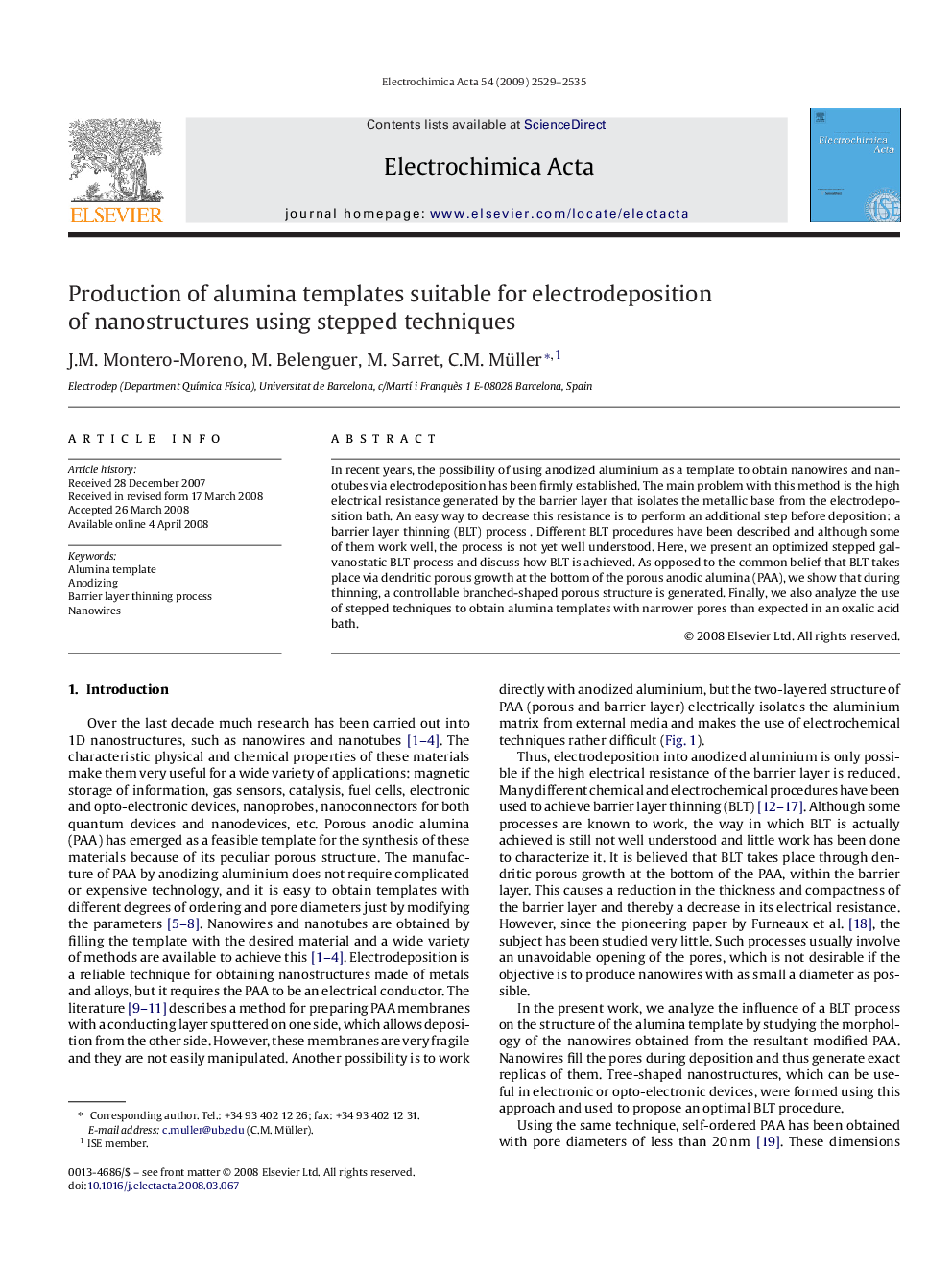| Article ID | Journal | Published Year | Pages | File Type |
|---|---|---|---|---|
| 194298 | Electrochimica Acta | 2009 | 7 Pages |
In recent years, the possibility of using anodized aluminium as a template to obtain nanowires and nanotubes via electrodeposition has been firmly established. The main problem with this method is the high electrical resistance generated by the barrier layer that isolates the metallic base from the electrodeposition bath. An easy way to decrease this resistance is to perform an additional step before deposition: a barrier layer thinning (BLT) process . Different BLT procedures have been described and although some of them work well, the process is not yet well understood. Here, we present an optimized stepped galvanostatic BLT process and discuss how BLT is achieved. As opposed to the common belief that BLT takes place via dendritic porous growth at the bottom of the porous anodic alumina (PAA), we show that during thinning, a controllable branched-shaped porous structure is generated. Finally, we also analyze the use of stepped techniques to obtain alumina templates with narrower pores than expected in an oxalic acid bath.
